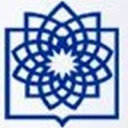Cytotoxic activity evaluation of some medicinal plants, selected from Iranian traditional medicine Pharmacopoeia to treat cancer and related disorders.
Mots clés
Abstrait
BACKGROUND
By studying the Iranian Traditional Medicine (ITM) Pharmacopoeia, we have collected information about medicinal plants which had been used to manage cancer-like disorders over eight hundred years, from medieval to the early modern era. Exploring the ITM herbal knowledge, the selected species have been subjected to MTT assay for examining their in vitro cyototoxic activity.
METHODS
Cancer was reviewed through the ITM and some terminologies were acquired. Five ITM Pharmacopoeia in Arabic and Persian languages from 10th to 18th century AD were explored. These Pharmacopoeia contained the ITM plants which were used to cure cancer and cancer-like diseases. The ITM names were matched with the scientific names. Then the medicinal plants were collected, authenticated and were evaluated for cytotoxic activity using MTT assay, against MCF-7, HepG-2, A-549 and HT-29 cell lines. Finally, the apoptosis induction ability of the most cytotoxic medicinal plant was investigated by activated caspase 3 inspection in MCF-7 cell line.
RESULTS
Six species of the evaluated medicinal plants revealed cytotoxic activity. The most cytotoxicity was observed in Tanacetum polycephalum subsp. argyrophyllum (K.Koch) Podlech with IC50 values of 28.3 μg mL(-1), 53.9 μg mL(-1) and 43.3 μg mL(-1) against MCF-7, A-549 and HT-29 cell lines, respectively. Caspase 3 activation was also observed in MCF-7 cells by Tanacetum polycephalum subsp. argyrophyllum. This is the first time that the cytotoxic activity of this species has been reported.
CONCLUSIONS
In the present study, some reliable references of ITM have been introduced and though many technical difficulties, linguistic problems and some other hindrances were encountered during the study, using traditional medicine texts for medicinal plant selection could be considered as a helpful starting point in the field of cancer drug discovery.


